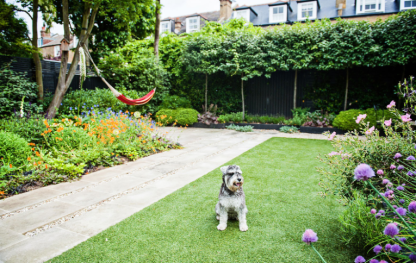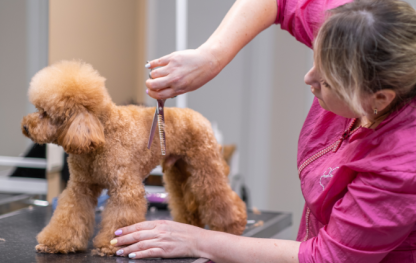A Guide to Crate Training: Creating a Safe Haven for Your Pet
Crate training is often misunderstood as a form of confinement, but when done thoughtfully, it becomes something much more comforting—a personal den where your dog can feel safe, calm, and secure. For women caring for their furry companions at home, a crate can be a valuable tool that supports house training, travel safety, and stress reduction, all while giving your pet a place to call their own.
Dogs are naturally den animals, and many instinctively enjoy having a quiet, enclosed space to retreat to when they’re tired, overwhelmed, or just want a nap. Crate training works best when the crate is introduced gradually and positively, turning it into a sanctuary—not a punishment. With patience and consistency, a crate becomes a place of rest, not restriction.

1. Choosing the Right Crate
Start with the right fit—your dog should be able to stand up, turn around, and lie down comfortably. Crates come in various materials like wire, plastic, or soft-sided designs. Wire crates with a divider are perfect for growing puppies, while plastic crates can offer a more den-like, cozy feel for adult dogs. Place the crate in a quiet corner of your home where your dog can still see you, but won’t be overwhelmed by activity or noise.
2. Make It Comfortable and Inviting
Line the crate with a soft blanket, dog bed, or a crate mat. Add a favorite toy or a chew to keep them occupied. Keep the crate door open during the day and toss in a few treats or feed your dog their meals inside to create positive associations. The goal is to help your dog see the crate as a peaceful place to relax, not a space they’re shut away in.
3. Introduce the Crate Gradually
Patience is key when crate training. Start by encouraging your dog to explore the crate without closing the door. Reward any interest—sniffing, stepping inside, or lying down—with treats and gentle praise. As your dog gets more comfortable, practice closing the door for a few seconds at a time while you’re nearby. Gradually build up to longer periods, ensuring your dog remains calm and relaxed throughout the process. Never force your dog into the crate or use it for punishment, as this will create fear and resistance.

4. Establish a Crate Routine
Use the crate as part of your dog’s daily rhythm. Crate time can be especially helpful during bedtime, when you’re away from home, or when guests are visiting. Be consistent with crate cues (such as “crate time” or “bed”) and always reward your dog for entering calmly. Puppies may need more frequent breaks, but older dogs can comfortably rest in their crate for a few hours at a time. If your dog whines or barks, wait for a calm moment before opening the door, so they don’t associate noise with being let out.

Final Thoughts
Crate training isn’t just about convenience—it’s about giving your dog a safe, familiar space where they can retreat, rest, and recharge. With patience and positivity, a crate becomes a home within a home—a quiet reminder that your dog is loved, secure, and part of the family.





